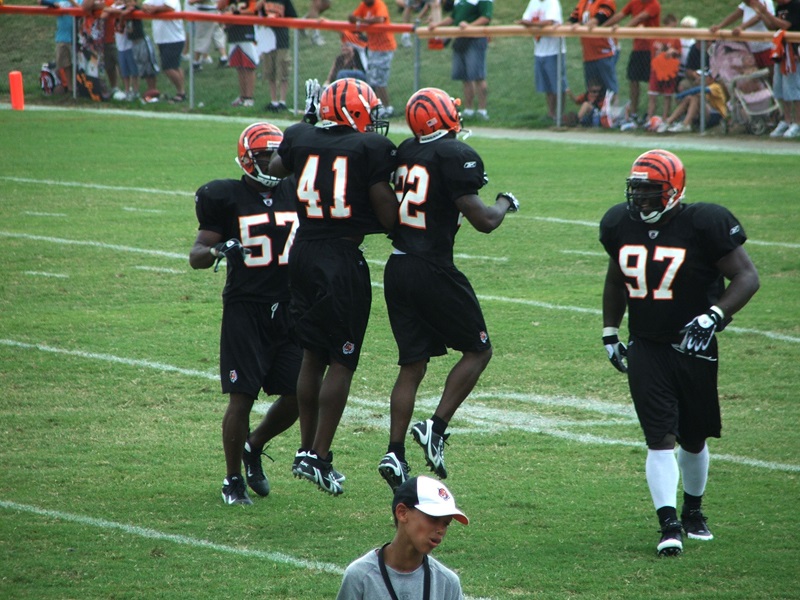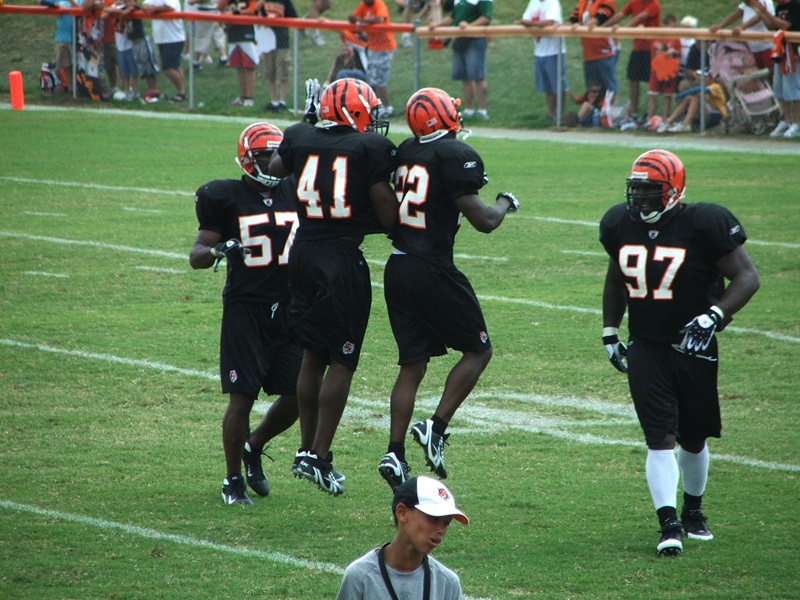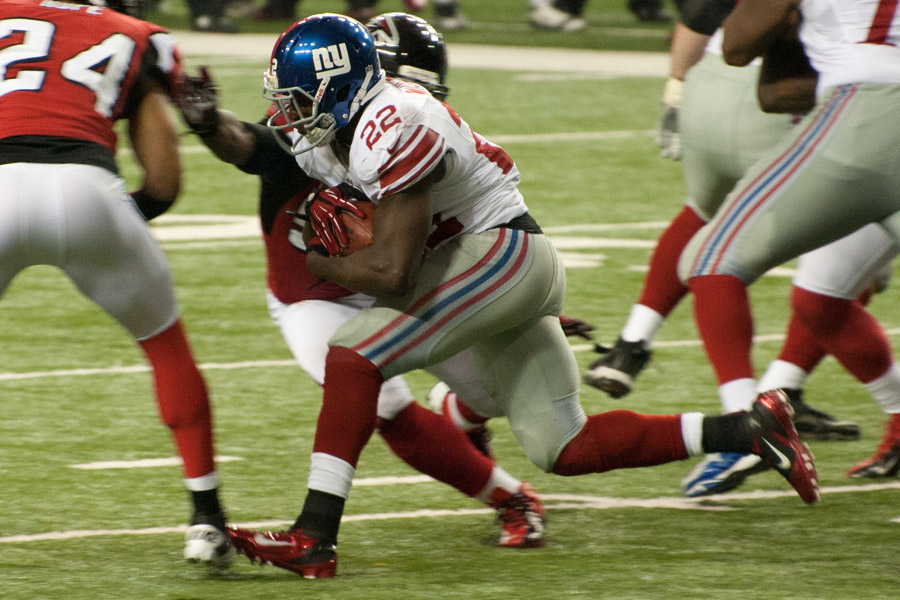
I’m a Matt Stafford fan. If you’re the kind of person who has an anxiety attack if you don’t have your morning coffee in that black mug you bought 12 years ago, then you probably dislike Stafford. If you’re a nitpicking analyst who lacks the perspective to see that numerous small flaws don’t outweigh a significant positive, you probably hate the Lions quarterback. I get it and many of these people are excellent writers with a terrific grasp of the sport.
They still need to stop thinking like the engineers, lawyers, and accountants that they are who write as a sideline.
At least once a week on Twitter, I see a writer slam Stafford for his poor footwork, his unsound throwing form, and his tendency not to follow through with his release in situations where he had a chance. And these Emily Posts of NFL football analysis are accurate with their takes. But are they really seeing the big picture?
They can cite quarterback rating, win-loss record, completion percentage to receivers not named Johnson, and several other points that fit their argument against Stafford ever becoming a top-notch starting quarterback. To be honest, I’m not confident that Stafford will ever take that next step to join the ranks of the very best in the league even if his yardage and touchdown totals might allow fans to make an argument in his favor as his career unfolds.
What is important to mention is that I see a bias among fans and analysts with honorary certificates from the Emily Post Evening School of Quarterback Technique. They’re naturally a paint by numbers crowd. They’ve learned the nuances of the game’s rules, strategies, and techniques, but they’ve failed to maintain an overall perspective beyond the minutiae of these details.
The acceptable model of “good quarterbacking” is still in the spectrum of Matt Ryan. The Falcons quarterback is a paint-by-numbers dream. If prep schools taught quarterbacking the way J. Evans Pritchard’s introduction outlines the proper way to appreciate poetry, Ryan would be within the acceptable range of that formula. Sam Bradford would probably be higher than you think – a player the Emily Post analysts would praise as an under-appreciated passer who has had unfortunate circumstances to begin his career.
However, I think Matt Ryan and Matt Stafford are pretty even as quarterbacks. Most will disagree because they have a bias when it comes to favoring mental acumen and consistency over special physical talent and inventive creativity. I’m among the most guilty of emphasizing the mental-savvy angle over physical talent.
But my message is really about not writing off less physically talented players. At the same time, you shouldn’t write off players who may lack the refined technique and high-end preparation results in the robotic, J. Evans Pritchard style of play. Lots of folks will tell you that they dislike quarterbacks like Brett Favre, Tim Tebow, Jay Cutler, and Ben Roethlisberger for their off-field behavior. However, I think one of the root issues that isn’t discussed is that they are creative players who err on the side of erratic behavior.
It’s easier to accept the fact that a player like Matt Ryan is going to be a conceptual quarter-bot with limited arm strength, mobility, and creativity when the play breaks down (although he has just enough arm and mobility to have a wide range before his athleticism and inventiveness reach their outer limits) than it is to accept an athlete with an off-the-chart arm and inventiveness like Matt Stafford to experience a brain fart. There’s something more acceptable within our society for our opponent to test our physical limitations than to come undone conceptually.
The Emily Post quarterbacks aren’t risk takers. As a result, their mistakes don’t appear as egregious as the likes of Favre, Roethlisberger, Cutler, or Tebow. These passers are more PR-friendly to fans and personnel directors. They’re either hitting the appropriate marks or the defense put them in situations where they could not physically make the play and the blame is spread among the passer’s teammates and coaches. The risk takers are more likely to have extremes that look like genius on a good day and imbecility on a bad day.
Give Stafford Julio Jones, Roddy White, and Tony Gonzalez, and I think he’d be just as productive as Ryan. He’d have more highs and lows, but I think the overall difference would be minimal. However until recently, Stafford has had one quality weapon compared to Ryan’s three. While we’re quick to show Stafford’s flaws, we’re trying to place a round peg in a square hole.
Stafford is capable of things many quarterbacks can’t do, but it also means his style will generate the types of mistakes that frustrate us because we don’t realize that high-end physical genius requires a risk that can cross the line to recklessness. With the exception of Tom Coughlin, most coaches are more patient with running backs in this sense. Aggressive players like Adrian Peterson or Eric Dickerson fumbled dozens of times during the first three years of their careers, but the coaches continued to go to the well with them. Coughlin, doesn’t want to recognize that David Wilson is a special physical talent whose risk of imbecility is worth the reward of game-changing genius.
Here’s a typical Matt Stafford play that I believe treads the line between genius and imbecility, but something you have to encourage if you’re going to commit to a player of Stafford’s rare physical talent. It’s a 3rd-and-six pass from a 1×3 receiver, 10 personnel pistol at the Bengals’ 11 with 3:42 in the first quarter and down by seven.
On this play, Cincinnati drops seven and rushes four. When at defense has the likes of Carlos Dunlap, Michael Johnson, and a sub like Wallace Gilberry do complement the interior like of Geno Atkins and Domata Peko, it’s a great reason why the Bengals are in first place in the AFC North. This is the same rush-four, drop-seven formula that made the Ravens defense dominant for several years. Seattle’s unit is also approaching this realm of excellence.
Stafford takes the snap and looks deep to short on the trips side as his starting point of his read. This is a good move, considering that the presnap photo above shows that the single receiver has a corner playing outside with a safety over top covering the inside. If the single receiver drew man coverage, Stafford would likely look there first.
The main player Stafford is seeking is Johnson deep, but the coverage drop has enough depth that the Lions quarterback has to come off his favorite target. While the other receiver working behind Johnson is breaking open outside, this is not a good choice. The linebacker at the five is in great position to break on the route and the receiver’s break is too shallow to generate a lot of yardage without breaking a tackle. The biggest reason this route isn’t a viable option is Carlos Dunlap generating a push so deep into the pocket that he closes Stafford’s throwing lane outside. If he guns it, the pass will be low enough to deflect. If he lofts it, the linebacker has time to cut it off or break up the receiver’s attempt.
To compound the difficulty of this situation, Michael Johnson has whipped the left tackle off the edge and it’s impossible for Stafford to climb the pocket without working through contact from the defensive end. While Stafford is a big quarterback, climbing the pocket in this situation is a losing proposition for even the most physically sturdy quarterbacks in the league 95 percent of the time – and I’m being generous. Stafford could try to spin outside the pocket , but if he does this, only Brandon Pettigrew (No.87) is working to the left flat on the cross and the tight end’s path leads directly towards the linebacker and cornerback – not good odds for Stafford, who will have to run at least 10 yards just to reach the line of scrimmage if he opts to tuck the ball and try to gain the first down with his legs.
Stafford knows that his only choice is No.18 Durham on the crossing route under the tight end. Durham gets the benefit of Pettigrew crossing the face of the linebacker at the left hash. With an accurate throw, he can hit Durham on the run in the direction of he two receivers running off the coverage on the right side of the field. The depth of Durham’s route is enough to earn the first down. This is all diagnosis that J.W. Pritchard would approve. However, look at the position of Johnson and Dunlap when Stafford reaches his third read.
For most NFL quarterbacks, this is checkmate. Brady, Manning, or Ryan making this play? Forget it. They’re throwing it away for another day. The defense painted them into a corner that they can’t escape. Stafford, Cutler, or Favre back in the day? Different story.
As maddening as Stafford’s Quisenberry throwing motion can be on plays where he has time to use proper form, this play is a work of art. Stafford not only releases the ball before Johnson wraps him, but from an angle that whizzes past Johnson’s ear hole, splits the defensive ends, and leads the receiver low and away so he can shield the oncoming defender to make the play.
Durham makes the grab, turns inside the defender over his back and falls forward to the Cincinnati three for the first down. Three plays later, Stafford hits Pettigrew to tie the game. If you look at the idea methods of throwing the football, field position, down-and-distance, and game situation, the “low-risk” play would have been to throw the ball away or take the sack and kick the field goal. But does it make sense to tell a player not to play to his physical ability because he’s in the top 1 percentile of throwers of a football?
It’s a high-risk play for the average NFL starter, but is it really a high-risk play for a guy like Stafford? Perhaps it still is, but I doubt the Lions drafted Stafford without the realization that he was a creative, risk-taking gunslinger. You make a commitment to a player like Stafford with the willingness to live with the tear-your-hair-out moments. It doesn’t mean you don’t try to limit them, but not at the expense of removing the creativity completely from his game.
Marc Trestman hasn’t killed Jay Cutler’s creativity. By emphasizing the run, focusing on quick reads and short passes, and improving the offensive line, the coach has just limited the situations where Cutler is forced to take as many egregious risks. Even Dan Reeves didn’t completely kill John Elway’s creativity. It may have felt that way to Elway, who had the shackles on him via Sammy Winder’s 3.9 yards-per-carry average for three and a half quarters per game. But if the game script called for it, Reeves unleashed Elway’s special talent.
I don’t know if Matt Stafford will ever become a great quarterback, but his physical skills make him capable of rare moments that the more conventional starters in this league will never have. We just have to realize that the good and the bad we face with a physical marvel (Stafford) is different from that of a technician (Ryan).
For more analysis of skill players like this post, download the 2014 Rookie Scouting Portfolio available April 1. Prepayment is available now. Better yet, if you’re a fantasy owner the Post-Draft Add-on comes with the 2014 RSP at no additional charge. Best, yet, 10 percent of every sale is donated to Darkness to Light to combat sexual abuse. You can purchase past editions of the Rookie Scouting Portfolio for just $9.95 apiece.



























